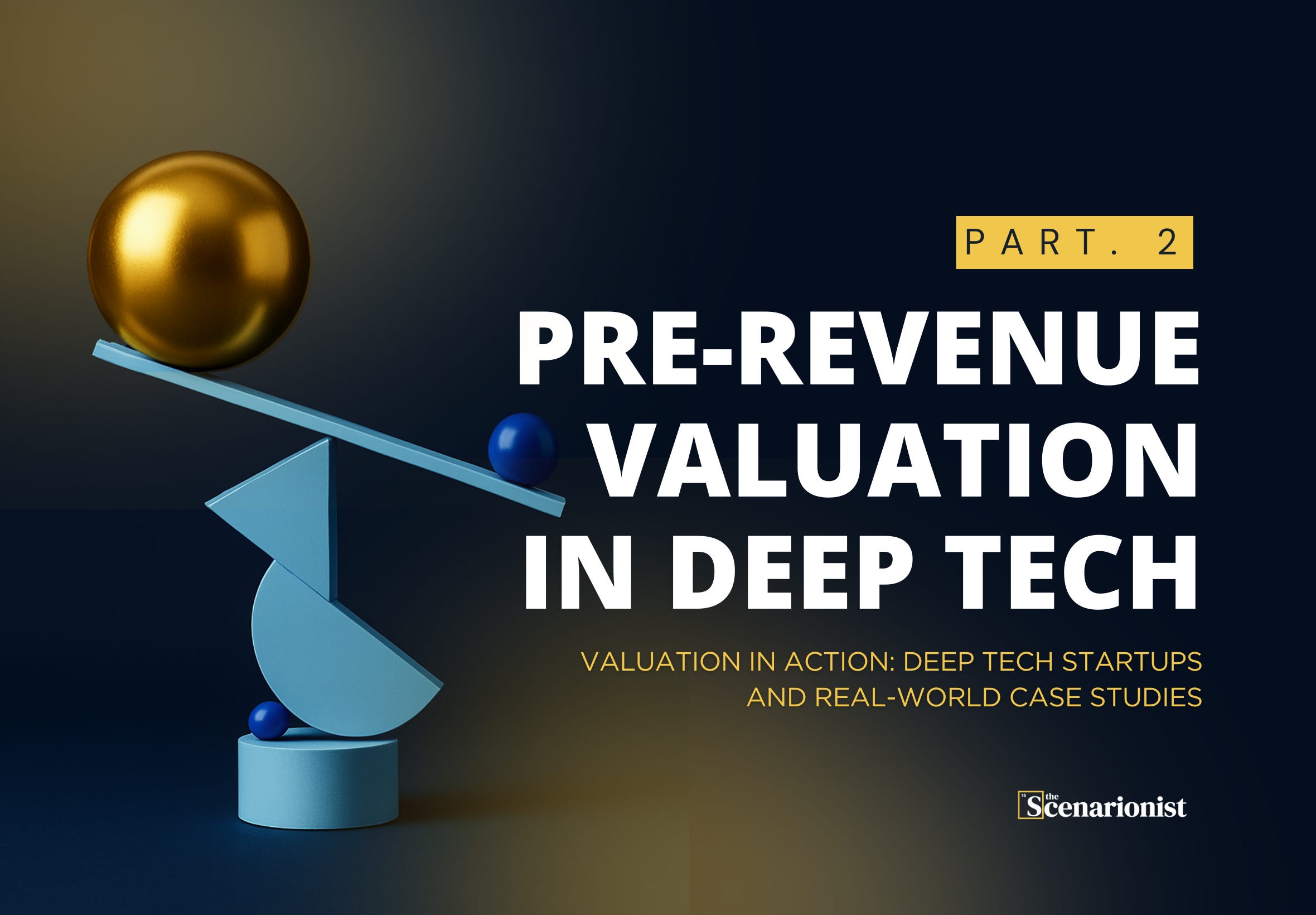Pre-Revenue Valuation in Deep Tech: How to Price What Doesn’t Exist Yet — Part 2
Valuation in Action: Deep Tech Startups and Real-World Case Studies
In Part 1, we introduced five methods for valuing pre-revenue deep tech startups — from milestone-driven models like Berkus to scenario-based approaches like First Chicago. Now we move from theory to execution.
This second part applies each valuation method to representative deep tech startup cases, crafted as analytical simulations that reflect the risk profiles, capital intensity, and time horizons common in the field. The examples span sectors such as orbital manufacturing, geothermal drilling, advanced materials, and next-generation battery chemistries, and are grounded in realistic fundraising narratives — modeled on actual investor behavior, market conditions, and term sheet dynamics.
Each case study demonstrates how structured valuation frameworks can help both founders and investors navigate pricing conversations — before revenue, before traction, and often before the market exists.
Then, we benchmark these simulated scenarios against real-world financings — from Varda Space and Lilac Solutions to Form Energy — to explore how structured logic aligns (or diverges) from valuations seen in practice.
In short, valuing pre-revenue deep tech is as much narrative as it is numbers.
No formula captures every nuance, but the right frameworks provide structure — they prevent valuation discussions from becoming pure guesswork. They compel clarity: what must go right, what could go wrong, and how risk and potential translate into value.
When asking, “What do you think we’re worth?”, it’s far more compelling to say:
“Our peer-stage baseline is ~$X; we believe we warrant a 1.Y× uplift based on [scorecard factors]; our risk table adjusts ±$Z based on [known advantages or challenges]; and our exit model, with assigned probabilities, suggests an expected return consistent with investor targets.”
That kind of transparency builds trust, builds value, and saves time.
As Commonwealth Fusion’s recent mega-round showed, even early-stage hard tech can command high valuations — but only when both sides have a clear, disciplined view of what’s at stake.
Recap: Five Methods for Pre-Revenue Valuation
Before diving into the case studies, let’s briefly recall the five common pre-revenue valuation methods from Part 1 and when they’re useful. Each methods attempts to bring structure to the inherently subjective task of valuing a startup with no revenue or cash flow:





